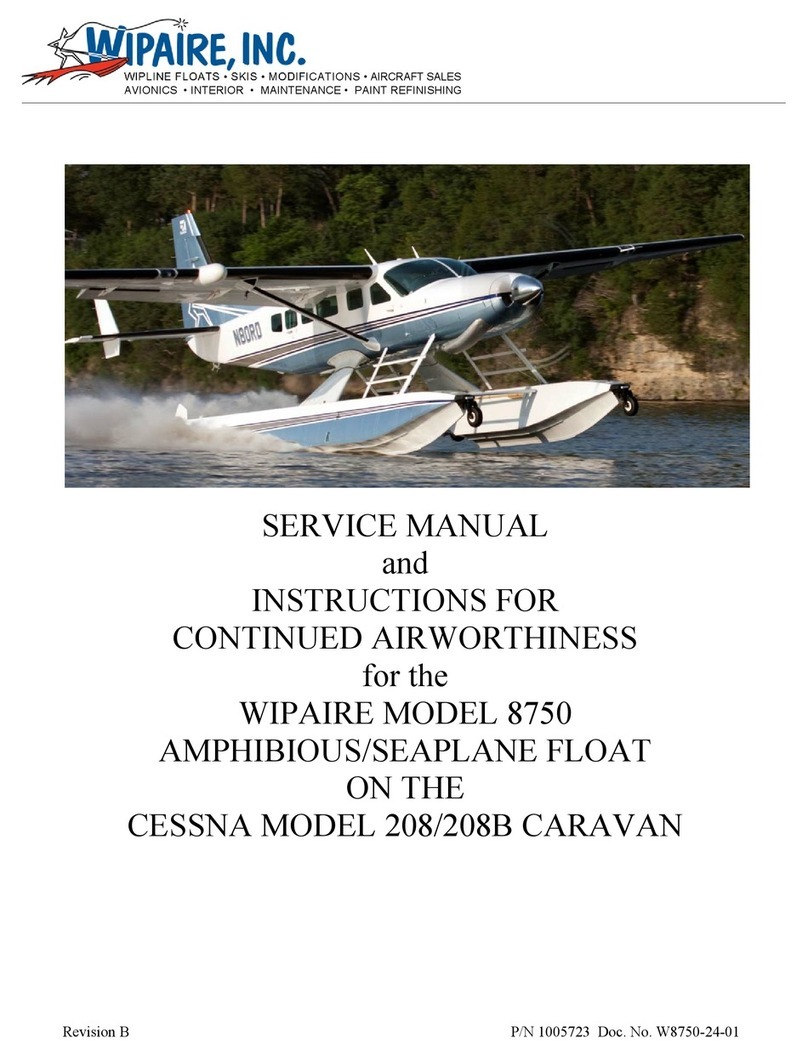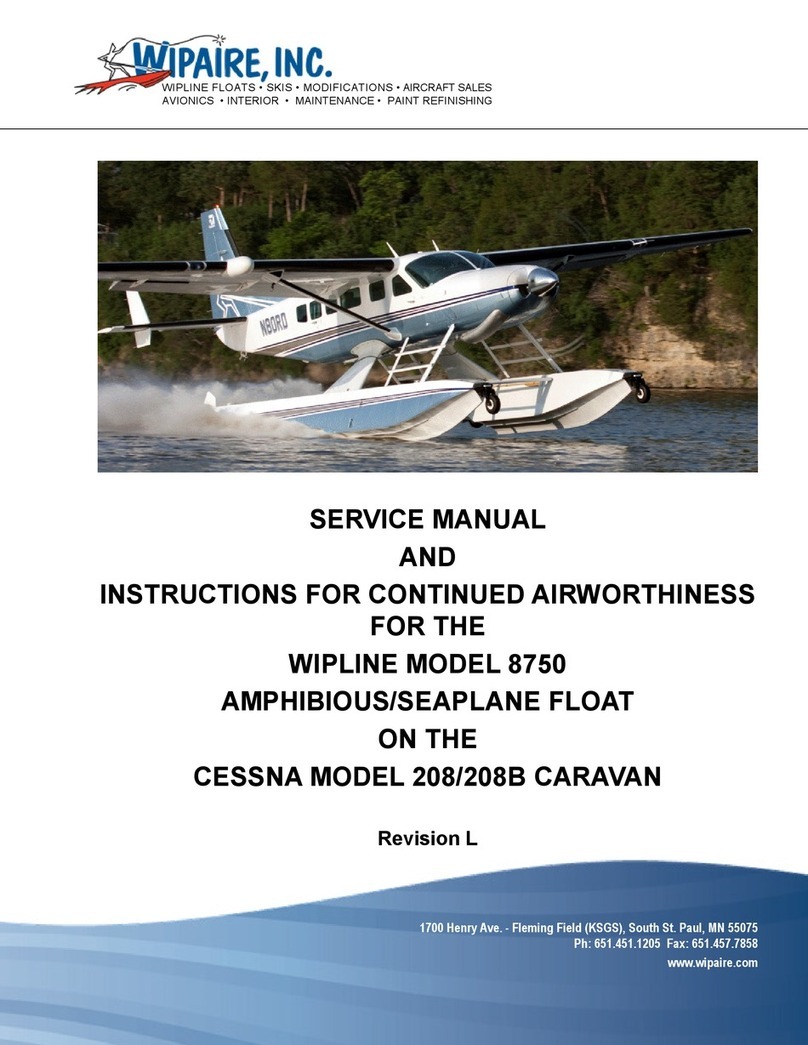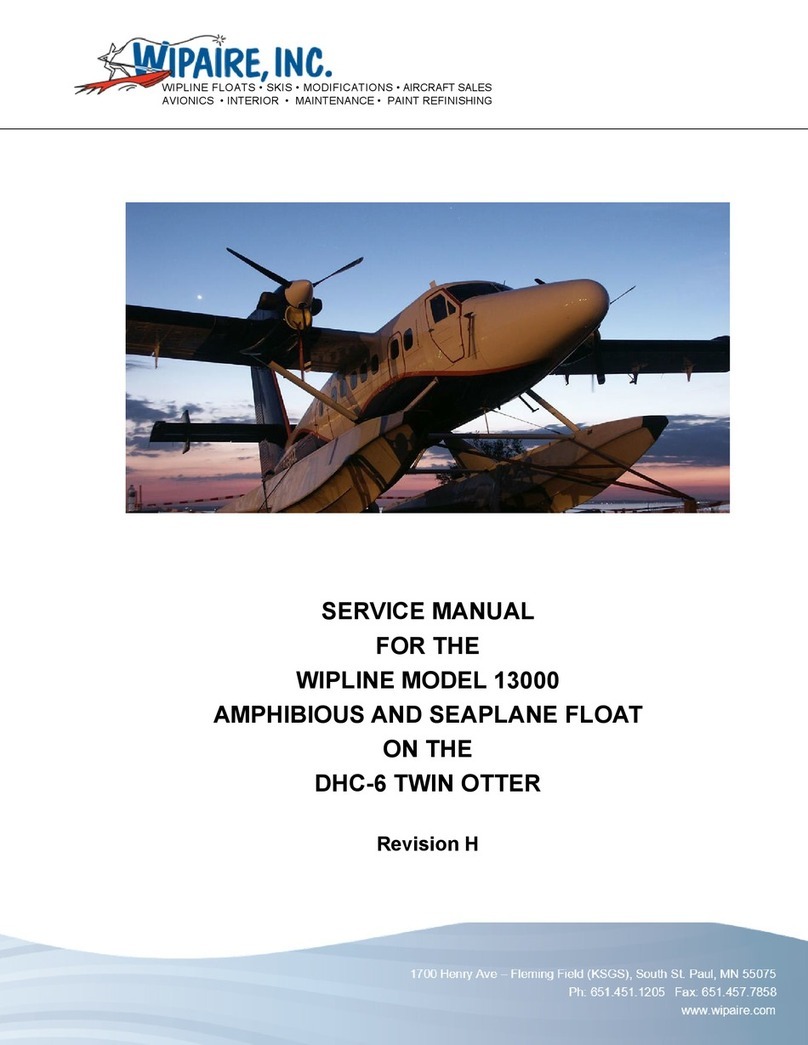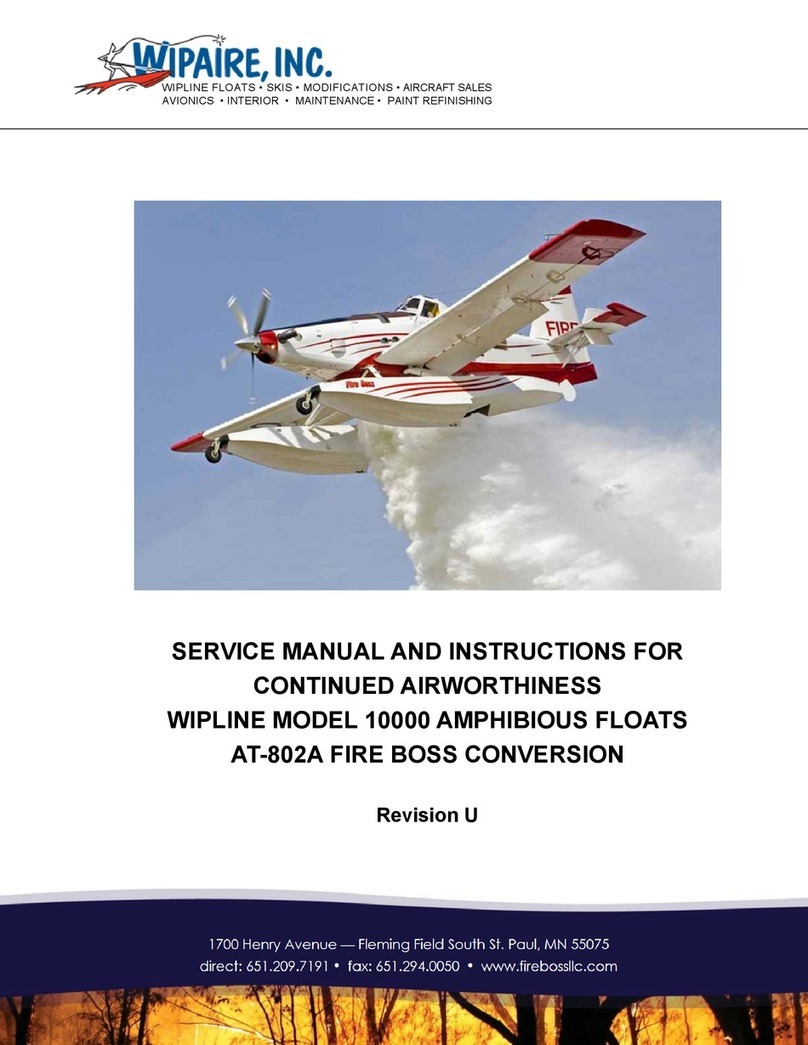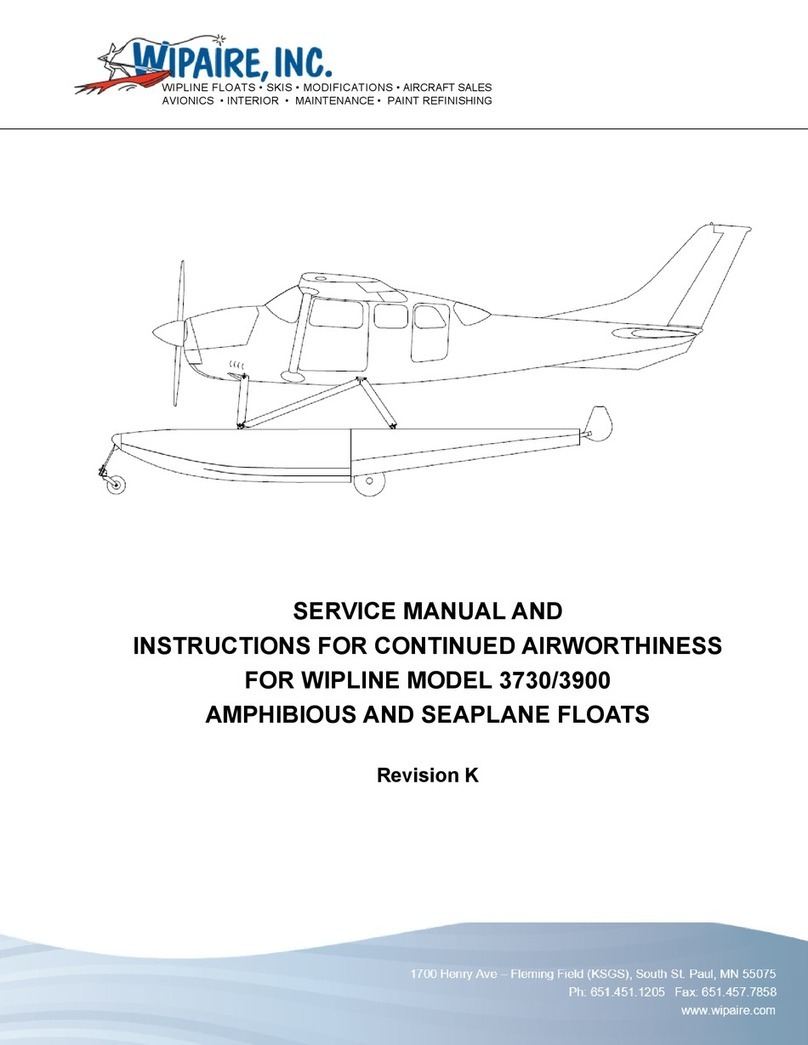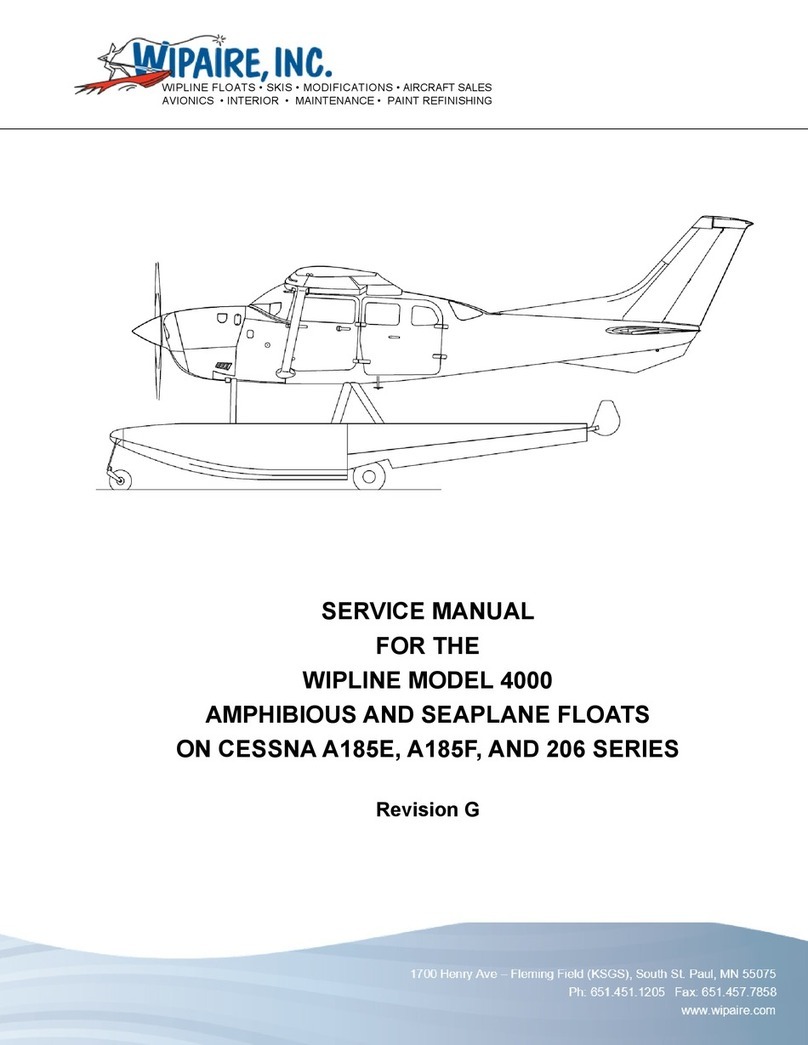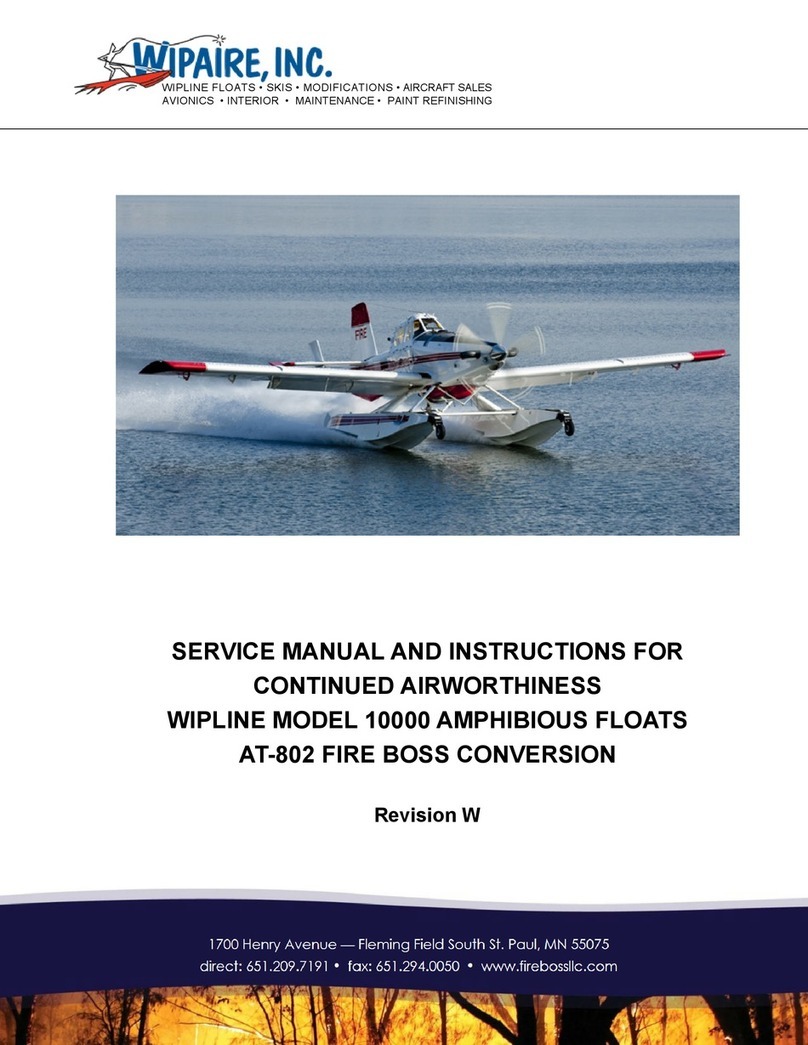
SERVICE MANUAL & ICA
WIPLINE 8000 FLOATS ON CESSNA 208
P/N 1002554 Revision P Page 3
LOG OF REVISIONS
Rev Pages Description Date
A 3 Revised aircraft jacking position. 3/16/2005
B 12,18 Added greasing zerk to tasks and changed drawing. 9/28/2005
C 7, 12 Added an inspection time limit and tolerances for the Nose Block Track wear. 4/18/2006
D 19-22 Made several additions to the inspection checklist. 1/18/2007
E9, 10,
15,16
Changes to the Cleaning, Corrosion and Main gear lubrication procedures and additional minor
changes to the inspection checklist. 5/31/2008
F 29, 36, 46 Changed water rudder cable tensions. 8/15/2008
G5, 6, 12,
13, 21
Changed main gear oleo servicing information. Added enhanced customer information pages
and cleaning and corrosion pages. 7/15/2009
H All Reformat of entire document, Add green grease as approved grease, update to oat
procedures with clarication on rear door support cables. 4/18/2013
J 30, 31 Added Shear Torque Chart, PR 1440 C Sealant and Tef-Gel, Removed Warranty Claim Form. 5/26/2015
K5, 14, 30,
31
Added Dow Corning DC4, Corrosion X, and Mobil Aviation Grease SHC 100 to approved
product list. Modied torque limit section. 12/4/2015
L
18, 22, 28,
33-35, 42,
46
New document formatting (multiple pages renumbered). Changed main gear tire pressure
from 45 +/- 5 PSI to 50 +/- 5 PSI. Replaced electrical schematic drawing for legibility. Added
inspection for main gear cracking at annual. Changed silicone to Teon spray. Added brake
grease, corrected 6P-730A Teon Spray to GP-730A. Removed new customer form. Removed
repairing content found in Wipaire document 1008274. Edited retract and steering cable
tensions. Added reference only note to metering pin.
11/7/2017
M 7 Added reference for Structural Repair Manual part number 1008274 in introduction. 5/1/2019
N11, 16, 18,
31-37
Added information about corrosion limits. Added circuit breaker note to section 4.4 and Added
note about STA-Lube. Updated details in Inspection Checklist about spreader bars and
y wires and emergency gear extension and retraction. Removed inspection column from
Maintenance Checklist.
8/3/2020
P18-21,
32, 34
Added sections 3.1 through 3.5. Changed gasket sealer to Tef Gel in section 5.3.1 Removal of
Main Gear Oleo. Removed GP-730A from Comet Industries. 2/3/2021
View most current revision of this ICA at www.wipaire.com.

